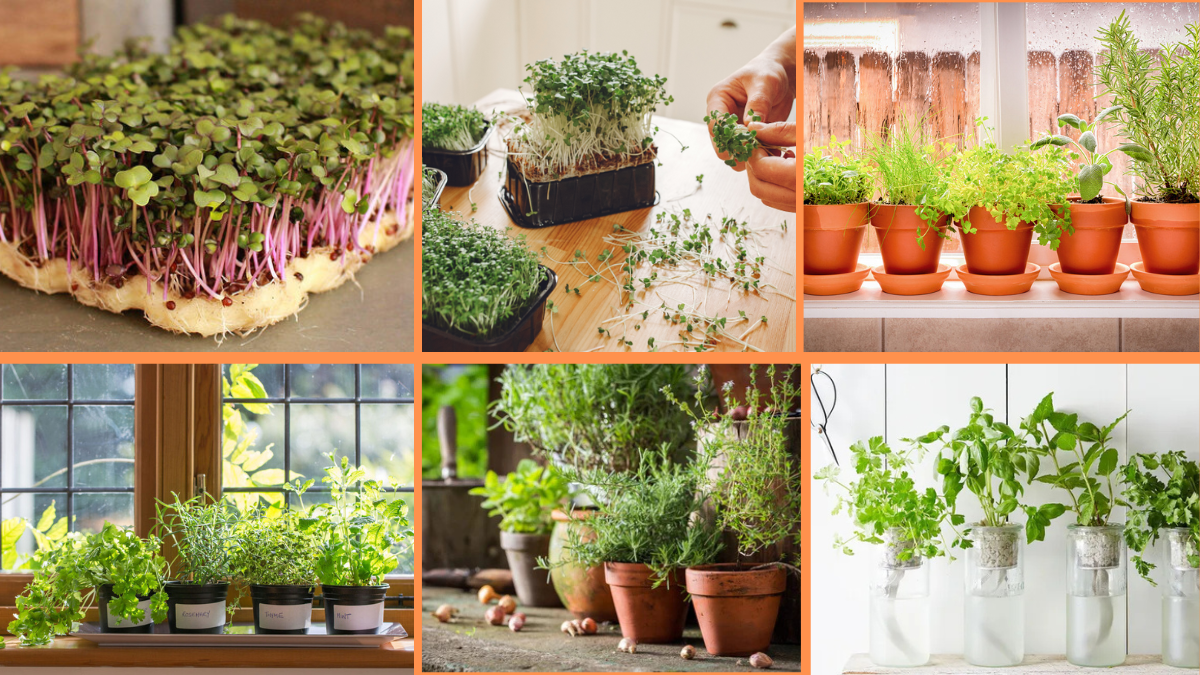There’s something wonderfully satisfying about snipping fresh herbs right from your kitchen windowsill and adding them straight to your cooking. Not only do herbs add incredible flavor and fragrance to meals, but growing them indoors also brings life, color, and a touch of nature into your home.
Even if you don’t have a sprawling garden, you can still grow a thriving, productive herb garden indoors — and it’s easier than you might think. With the right guidance, you’ll be growing everything from basil to rosemary on your countertop in no time.
Ready to get started? Here’s a detailed, beginner-friendly guide covering 10 essential tips to successfully start and maintain an indoor herb garden.

Why Grow an Indoor Herb Garden?
Before diving into the how-to’s, let’s talk about why you should consider starting one:
- Fresh, flavorful herbs at your fingertips year-round
- Save money on store-bought fresh herbs
- Beautify your kitchen or living space with greenery
- Improve air quality naturally
- Easy, beginner-friendly plants to practice your gardening skills
Whether you’re a home chef, wellness enthusiast, or plant lover, an indoor herb garden is a rewarding project that anyone can manage.
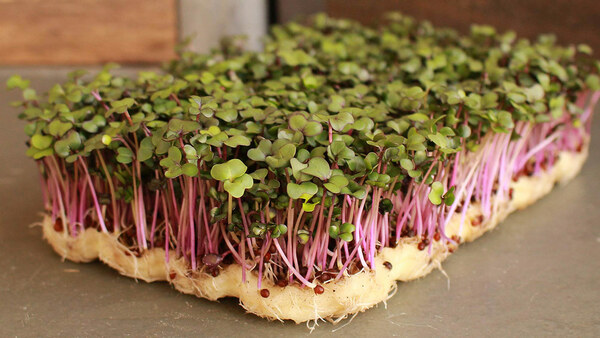
10 Essential Tips to Start an Indoor Herb Garden
1. Choose the Right Herbs for Indoors
Not all herbs thrive indoors, so start with varieties that are well-suited for indoor environments. The easiest and most reliable herbs for indoor growing include:
- Basil
- Parsley
- Mint
- Chives
- Cilantro
- Thyme
- Oregano
- Rosemary
Pro Tip: Start with 3-5 herbs you use most often in your cooking to make your indoor garden both functional and manageable.
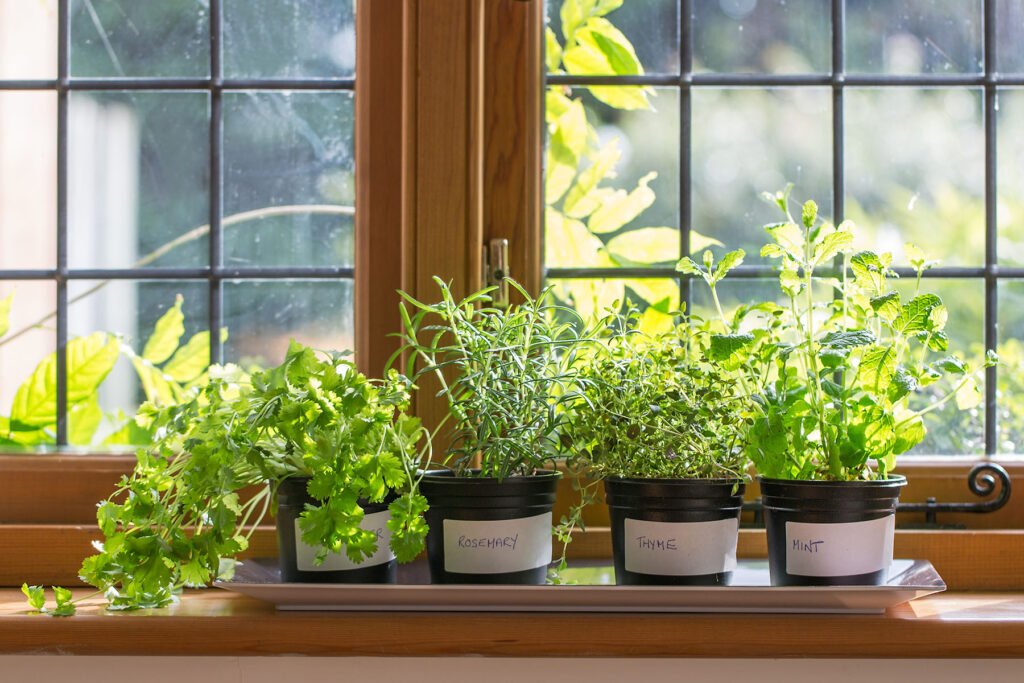
2. Pick a Bright, Sunny Spot
Most herbs need at least 6 hours of bright, indirect sunlight daily. A south-facing window is ideal. If natural light is limited, consider using a grow light to supplement.
Signs your herbs need more light:
- Long, leggy stems
- Pale leaves
- Slow growth
Pro Tip: Rotate your pots every few days to ensure even growth on all sides.
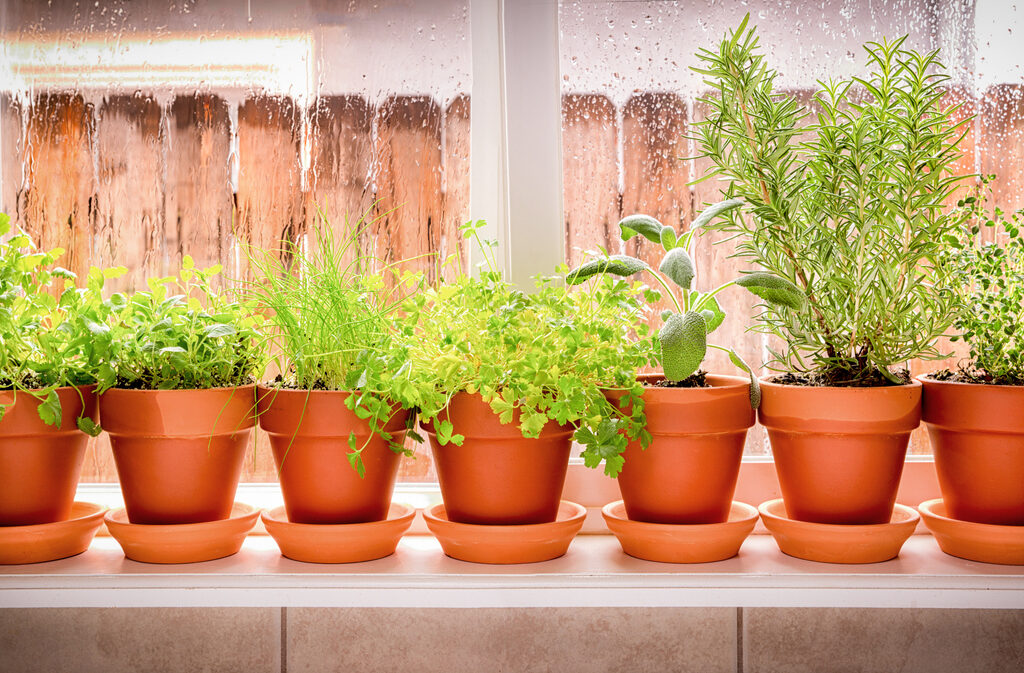
3. Select the Right Containers
Good drainage is crucial for herbs. Choose containers with drainage holes to prevent root rot.
Container ideas:
- Ceramic pots
- Terracotta planters
- Hanging baskets
- Window boxes
Pro Tip: Place saucers or trays under the pots to catch excess water and protect your windowsill or countertop.
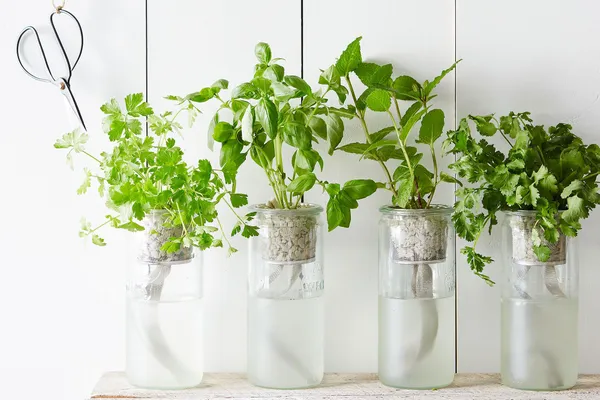
4. Use High-Quality Potting Mix
Herbs need a light, well-draining potting mix. Avoid heavy garden soil, which can compact and suffocate roots indoors.
Ideal potting mix for herbs:
- Lightweight, peat-based or coconut coir mix
- Added perlite or vermiculite for extra drainage
- Optional: a small amount of organic compost for nutrients
Pro Tip: Avoid overpacking the soil to allow roots to breathe.
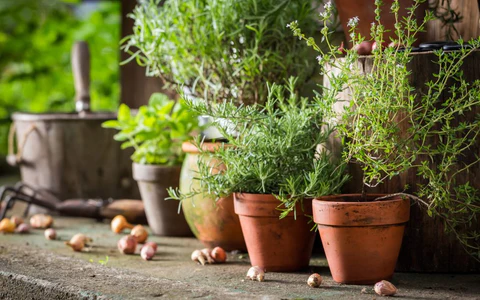
5. Water Wisely
Indoor herbs generally prefer soil that’s moist but not soggy. Overwatering is a common mistake for beginners.
Watering tips:
- Check soil moisture with your finger — water when the top inch feels dry.
- Water at the base, not on the leaves.
- Empty any excess water from saucers after watering.
Pro Tip: In winter, when indoor air is drier, mist herbs lightly to maintain humidity.
6. Fertilize Sparingly
Indoor herbs don’t need heavy feeding, but a little nutrition helps them stay productive.
Fertilizing tips:
- Use a balanced, water-soluble fertilizer at half strength.
- Feed every 4-6 weeks during active growing seasons (spring and summer).
- Hold off in fall and winter when growth slows.
Pro Tip: Organic options like fish emulsion or compost tea work beautifully for edible plants.
7. Harvest Regularly (But Not Too Much)
Frequent harvesting encourages herbs to grow bushier and more productive.
How to harvest:
- Pinch off leaves or stems just above a pair of leaves.
- Don’t remove more than 1/3 of the plant at once to avoid stressing it.
- Use clean scissors or your fingers.
Pro Tip: Remove flowers as soon as they appear to keep herbs like basil and mint focused on leaf production.
8. Watch for Pests and Problems
Even indoors, herbs can attract pests like aphids, spider mites, or fungus gnats.
Common issues and fixes:
- Sticky leaves or webbing: Likely spider mites — wipe leaves with a soapy water solution.
- Tiny flying insects: Fungus gnats — let soil dry out and use sticky traps.
- Yellowing leaves: Overwatering or lack of light.
Pro Tip: Isolate new plants for a week to check for pests before adding them to your indoor garden.
9. Keep Air Circulation in Mind
Good airflow prevents mold, mildew, and fungal diseases — all of which herbs are prone to in humid, enclosed spaces.
Tips for better air circulation:
- Space pots at least an inch apart.
- Avoid crowding herbs on windowsills.
- Use a small fan on low in stuffy rooms.
Pro Tip: Opening windows periodically (weather permitting) can refresh the air and your herbs.
10. Repot or Replace When Needed
Herbs can outgrow their containers or become woody and less productive over time.
Signs it’s time to repot or replace:
- Roots growing out of drainage holes.
- Soil dries out rapidly.
- Plant growth slows dramatically.
Pro Tip: Most herbs (like basil and cilantro) are annuals, so plan to replace them after a season or two.
Bonus: Best Herbs for Indoor Growing
If you’re still deciding which herbs to grow, here’s a quick guide to indoor favorites:
| Herb | Light Needs | Watering | Use |
|---|---|---|---|
| Basil | 6-8 hrs of sunlight | Keep soil slightly moist | Italian dishes, pesto |
| Mint | Bright, indirect light | Keep evenly moist | Teas, desserts, sauces |
| Rosemary | 6 hrs direct sunlight | Allow topsoil to dry | Roasts, bread, infused oils |
| Chives | Bright light | Moist, not soggy | Soups, salads, egg dishes |
| Parsley | Bright indirect light | Moist soil | Garnishes, sauces, stews |
Final Thoughts: A Flavorful, Fresh Home Garden
An indoor herb garden is a simple yet rewarding way to bring greenery, fragrance, and fresh flavors into your home. With these 10 practical tips, even complete beginners can cultivate lush, healthy herbs right on a windowsill, countertop, or balcony.
All you need is a few containers, quality soil, a sunny spot, and a bit of care. Soon enough, you’ll be snipping your own basil for pasta, mint for mojitos, and rosemary for roasted potatoes — all from your indoor oasis.
